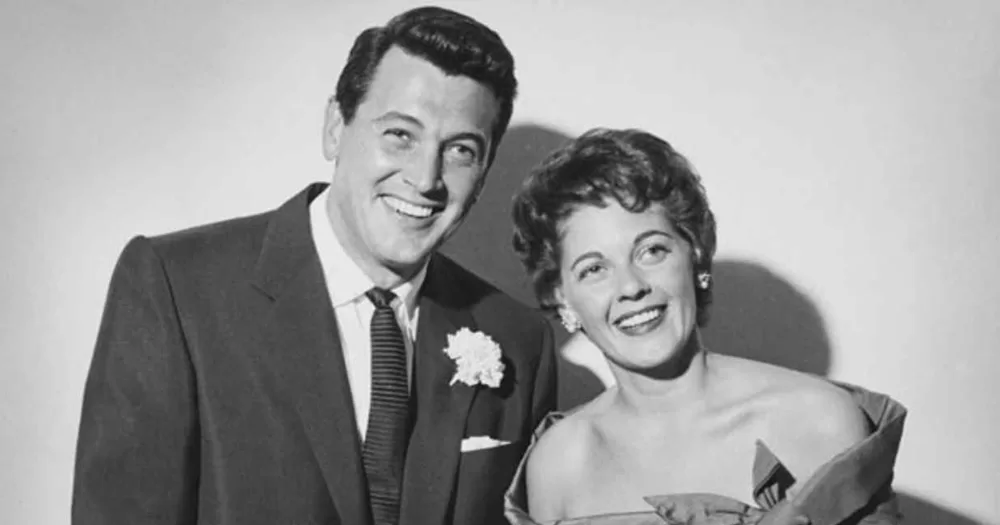In an era when homosexuality was deemed immoral and criminalised, lavender marriages offered a means for members of the LGBTQ+ community to navigate their personal and professional lives discreetly.
The term “lavender marriage” was coined during the early 20th century to describe marriages of convenience between two LGBTQ+ persons of the opposite gender or one LGBTQ+ person and a person of the opposite gender. These unions were often arranged to meet societal and familial expectations, providing a cover for their true sexual orientations.
The term “lavender” likely originated from the colour’s association with homosexuality and its use as a symbol by early gay rights activists. Although less prevalent today, lavender marriages remain significant in history as a symbol of the struggle for recognition and visibility in LGBTQ+ culture.
The phenomenon was especially prevalent in Hollywood during the “golden age” of cinema when studios mandated their stars to maintain a heterosexual image. While these marriages weren’t always successful in upholding the facade, they remained a common practice until society gradually became more acceptant of homosexuality in the latter half of the 20th century.
Famous lavender marriages, both historical and contemporary, involve celebrities entering into unions to conceal their homosexuality. These marriages have faced criticism for reinforcing stereotypes, but they persist in industries where image is paramount.
One of the most well-known examples is the marriage between actor Rock Hudson and his agent, Phyllis Gates, in the 1950s. Hudson was one of the first actors to be publicly diagnosed with AIDS, which raised awareness about the disease and the need for LGBTQ+ rights.
Another example of a famous Lavender Marriage is Rock Hudson and his secretary Phyllis Gates.
They married in 1955 and separated two years later, after rumors of his homosexuality and infidelity began. pic.twitter.com/vmRZ3lJbzB
— Metro (@MetroUK) June 16, 2021
Other notable marriages include actress Barbara Stanwyck’s marriage to actor Robert Taylor and playwright Tennessee Williams’ with Frank Merlo.
In an era where same-sex relationships were illegal and socially unacceptable, lavender marriages provided a way for couples to avoid persecution. Legal and social barriers compelled these couples to conceal their identities, creating a complex and challenging dynamic.
Barbara Stanwyck and Robert Taylor signing autographs at the premiere of His Brother’s Wife (1936) pic.twitter.com/MBvsLK1YCi
— Old Hollywood (@TheOldHollywood) November 12, 2023
Generally today, the term lavender marriage encapsulates a historical phenomenon where societal norms and legal restrictions compelled individuals to enter into marriages of convenience. Despite facing criticism, these unions played a significant role in navigating societal expectations and challenging discriminatory laws. As societal attitudes continue to evolve, the legacy of lavender marriages remains a testament to the ongoing struggle for LGBTQ+ acceptance and visibility.
And even though in recent decades there has been a significant increase in LGBTQ+ representation across various media, fostering awareness and acceptance, discrimination and marginalization persist, particularly in conservative areas. Some individuals still face pressure to conform to societal norms, leading to contemporary lavender marriages. These unions highlight the ongoing struggle for acceptance and understanding in society.
© 2023 GCN (Gay Community News). All rights reserved.
Support GCN
GCN is a free, vital resource for Ireland’s LGBTQ+ community since 1988.
GCN is a trading name of National LGBT Federation CLG, a registered charity - Charity Number: 20034580.
GCN relies on the generous support of the community and allies to sustain the crucial work that we do. Producing GCN is costly, and, in an industry which has been hugely impacted by rising costs, we need your support to help sustain and grow this vital resource.
Supporting GCN for as little as €1.99 per month will help us continue our work as Ireland’s free, independent LGBTQ+ media.

comments. Please sign in to comment.